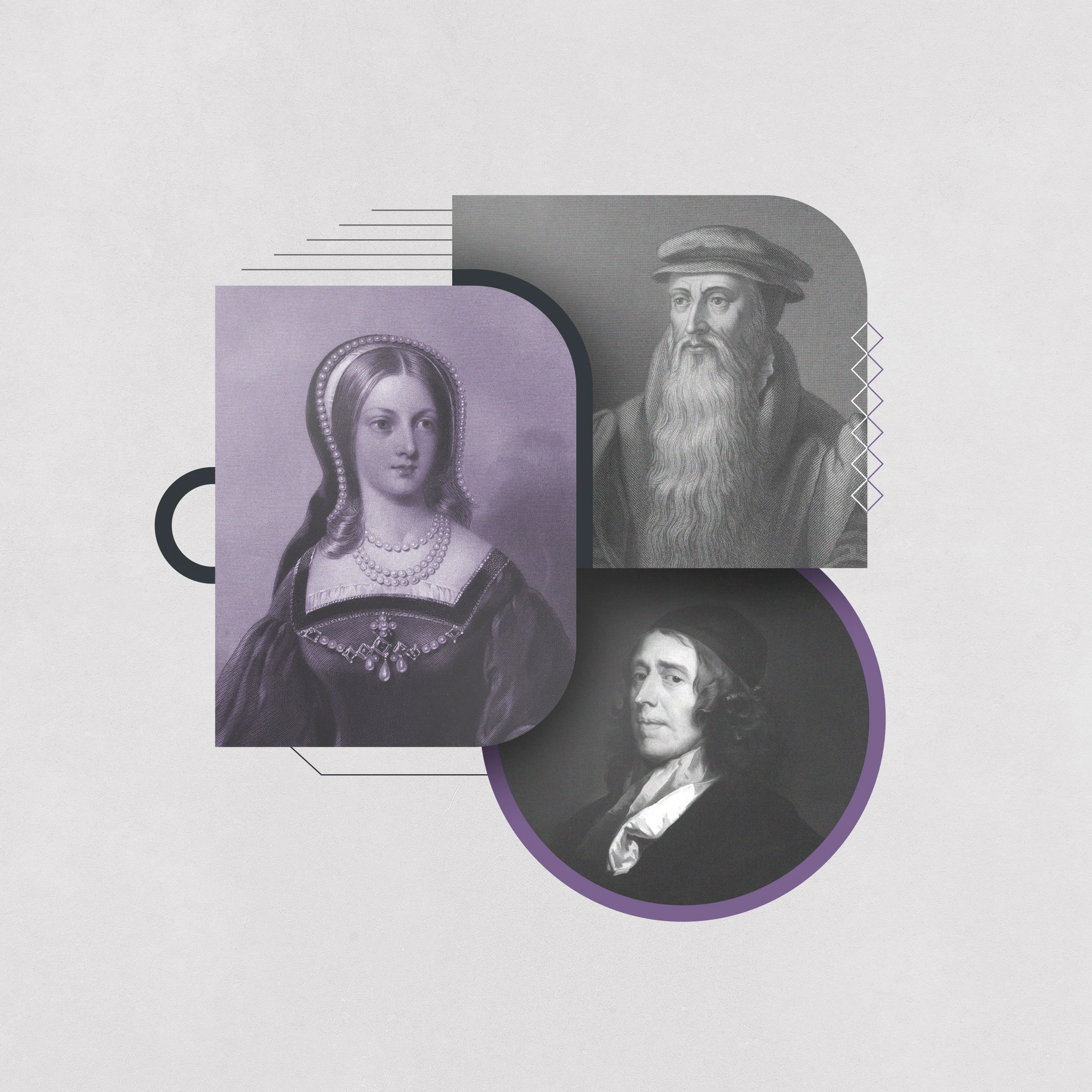Who Was John Knox?

It might be difficult for a visitor to Scotland in 2014 to believe that the nation was a backwater country five hundred years ago. In fact, however, one sixteenth-century writer could, without fear of contradiction, describe it as “a corner of the world separate from the society of men . . . almost beyond the limits of the human race.”
However, in the early 1500s, Scotland had one thing in common with the rest of Europe: a deeply corrupt and spiritually impoverished church, with morally moribund leadership. To cite one notorious example, David Beaton, cardinal and archbishop, legitimated at least fourteen children as his own. So much for celibacy in action. Such was the spiritual ignorance that George Buchanan could claim that some priests thought the New Testament was a book recently published by Martin Luther.
Nor was this spiritual penury confined to the lower orders. During the course of the trial of Thomas Forret in 1539, his prosecutor pulled a book out of Forret’s glove and shouted, “Behold, he has the book of heresy in his sleeve, which makes all the confusion in the kirk.“ This prime exhibit for the prosecution was, in fact, Forret’s copy of the New Testament. When one discovers that the presiding bishop in the trial confessed, “I thank God that I never knew what the Old and New Testament was,“ it comes as no surprise to learn that the brave Forret was burned at the stake.
Enter John Knox, and the Reformation was under way.
But Scotland was by no means transformed overnight. Nor was Knox the first Scottish Reformer. He was preceded by a roll call of heroes of the faith, men such as Forret, some of whom had given their lives for the recovery of biblical truth and the reformation of the church. Patrick Hamilton had been burned in 1528, and George Wishart (whom Knox had served as a bodyguard) was executed in 1546. So Knox came to reap what others had sown. His calling was to secure this embryonic work of God’s Spirit.
Born in Haddington, East Lothian, sometime between 1513 and 1515, Knox received his schooling locally and then at the University of St. Andrews, according to Buchanan’s testimony. He became a priest and returned to his home region as notary and tutor. We know as little about his conversion as we do about Calvin’s. His life as a Reformer can be divided basically into four segments.
Capture and Enslavement
After Wishart’s martyrdom, Knox came to St. Andrews with some of his young students and, in 1547, joined the group of Reformers living in the castle there after Cardinal Beaton's murder. When he was appointed to preach, he refused, but he was virtually manhandled into accepting a call from the castle congregation to become their minister. Within a matter of months, however, the castle was under siege from French ships in St. Andrews Bay. Knox and others were captured, and he became a galley slave for the next year and a half.
Career in England
In 1549, Knox was released and made his way to England. He pastored a congregation at Berwick, but soon he moved to Newcastle. He then became a royal chaplain during the days of the young King Edward VI. Moving farther south, his influence grew, not least in his insistence on what came to be known as the “Puritan” principle for regulating public worship: only what is commanded in Scripture is mandated in the life of the church. Paradoxically, it was the Presbyterian Knox who was influential in having the so-called Black Rubric included in the Book of Common Prayer, stating that kneeling to receive Communion was not a sign of devotion but merely a convenient form of administration.
The death of Edward in 1553 was a body blow to the reforming party in England, leading as it did to the enthronement of Mary Tudor. (“That idolatrous Jezebel” were Knox’s carefully chosen words to describe her.) Knox sought refuge on the Continent.
Life on the Continent
Between 1553 and 1559, Knox lived a somewhat nomadic existence. He spent some time with Calvin in Geneva, calling it “the most perfect school of Christ . . . since the days of the apostles.” Thereafter, he accepted a call to pastor the English-speaking congregation at Frankfurt am Main. But there, trouble arose over his vision for a church that would conform absolutely to the New Testament pattern.
Around five o’clock came his final request: “Read where I cast my first anchor.”
In 1555, after a further period in Geneva, Knox returned to Scotland to strengthen the work of reformation. He particularly sought to encourage members of the Scottish nobility who he feared were in danger of easy compromise with Rome.
Knox married Marjory Bowes and, in 1556, returned to Geneva, where he pastored a congregation of some two hundred refugees. The following year, he received an urgent invitation to return to Scotland—1558 was the scheduled time for the marriage of the young Mary, Queen of Scots, to the dauphin of France, an event that seemed to destine Scotland for permanent Roman Catholic rule.
Urged on by Calvin, Knox made a difficult and dangerous journey through war zones to Dieppe, France, only to receive word that some of the nobility no longer felt the urgency of the situation. (Some of them were actually in Paris at that time making preparations for the much-feared marriage of Mary.) Knox’s response was to urge upon these “Lords of the Congregation” the taking of a common band (bond or covenant), thus setting a precedent of covenant-making in Scottish piety.
A taste of Knox’s vigor can be savored in a letter he wrote that same year to the people of Scotland, urging them not to compromise the gospel. He reminded them that they must answer for their actions before the judgment seat of God:
[Some make excuses:] “We were but simple subjects, we would not redress the faults and crimes of our rulers, bishops, and clergy; we called for reformation, and wished for the same, but the Lords’ brethren were bishops, their sons were abbots, and the friends of great men had possession of the church, and so we were compelled to give obedience to all that they demanded.” These vain excuses, I say, will nothing avail you in the presence of God.
Return to Scotland
In 1558, England’s “Bloody” Mary died and was succeeded by Elizabeth I. Knox sought a safe passage home through England. By this time, however, he was known as the author of the infamous polemic against female monarchs: First Blast of the Trumpet Against the Monstrous Regiment of Women, which had been published anonymously at first in Geneva and had gone on sale without Calvin’s knowledge. The safe passage was refused, and so it was by boat to Leith, the harbor for Edinburgh, that Knox finally returned home to begin his most important phase of public ministry.
Despite his lengthy absences from his native land, several things equipped Knox to lead the Reformation there: his name was associated with the heroes of the recent past, his sufferings authenticated his commitment, his broad experience had prepared him for leadership, and his sense of call made him “fear the face of no man.”
Knox gives a vivid account of these days in his History of the Reformation in Scotland. His famous interviews with Mary, Queen of Scots, often misrepresented, indicate his total commitment to the principles of Scripture. It was probably that total commitment that led to a dwindling of support among those from whom he had hoped so much. In earlier days, his radical vision had provided an opportunity for the nobility to lead Scotland into the future, but many were to prove too little concerned for the radical transformation of the spiritual life of the church and nation. As one modern scholar put it, “The language of the covenant had been replaced by a more seductive image—the common weal [well-being].”
This change in Knox’s influence was illustrated at the coronation of the young James VI, where Knox preached the sermon but the ex-Roman Catholic bishop of Orkney performed the anointing of the king in accordance with the ancient rites. The return of bishops to the Kirk already had appeared over the horizon.
By the summer of 1572, Knox was a shadow of his former self. Weakened by a stroke, it was beyond his powers to preach in the Church of St. Giles, although he managed to do so occasionally at the nearby Tolbooth. By November, it was clear he was not long for this world. On the morning of November 24, he asked his wife to read 1 Corinthians 15 to him, and around five o’clock came his final request: “Read where I cast my first anchor,” presumably in faith; she read John 17. By the end of the evening, he was gone.
Knox himself wrote with deep gratitude to God of the work that he had seen accomplished:
As touching the doctrine taught by our ministers and . . . the administration of sacraments used in our Churches, we are bold to affirm that there is no realm this day upon the face of the earth that hath them in greater purity; yea (we must speak the truth, whomsoever we offend), there is none . . . that hath them in the like purity.
Many explanations have been forthcoming for Knox’s influence and that of the Scottish Reformation. No doubt there were many factors at work in the providence of God that brought about such spiritual renewal. But Knox’s own conviction was this: “God gave His Holy Spirit to simple men in great abundance.” Therein lies the greatest lesson of his life.
This article is part of the Historical Figures collection.



